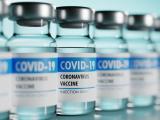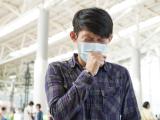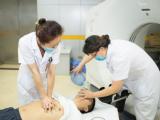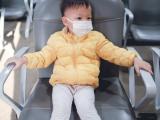Apr 7, 2003 (CIDRAP News) – Efforts to develop a fast, reliable diagnostic test for severe acute respiratory syndrome (SARS) suffered setbacks in recent days as the disease continued to spread at a brisk pace, according to the World Health Organization (WHO).
Of three different tests under development, two don't work until relatively late in the course of the illness, and one can be used earlier but is not very reliable, WHO announced today.
Meanwhile, the global case count today reached 2,601, an increase of 85 since the previous report on Apr 5, and deaths totaled 98, up 9. The latest deaths included 4 in mainland China, 2 in Canada, and 3 in Hong Kong. The case total represents an increase of more than 3% in the past 2 days.
The US case count from the Centers for Disease Control and Prevention (CDC) at this writing remained at 115, the same as reported Friday, Apr 4. No deaths have been reported in the United States.
Today's WHO statement said, "The development of a diagnostic test, which is being pursued around the clock by the WHO collaborating network of 11 laboratories, has proved more problematic than hoped." The cause of SARS is believed to be a new type of coronavirus, a family of viruses previously associated mainly with the common cold.
An ELISA (enzyme-linked immunosorbent assay) test detects antibodies to the SARS agent reliably, but not until about 20 days after the onset of symptoms, when it's too late to keep patients from spreading the virus to others, WHO officials said.
"The second test, an immunofluorescence assay (IFA), detects antibodies reliably as of day 10 of infection, but is a demanding and comparatively slow test that requires the growth of virus in cell culture," the statement continued.
Finally, the agency said, "The presently available PCR [polymerase chain reaction] molecular test for detection of SARS virus genetic material is useful in the early stages of infection but produces many false-negatives, meaning that many persons who actually carry the virus may not be detected—creating a dangerous sense of false security for a virus that is known to spread easily in close person-to-person contact."
Last week CDC officials sounded confident about the newly developed tests. At an Apr 4 briefing, James Hughes, director of the National Center for Infectious Diseases, said the agency hoped to make some of the diagnostic tests available to state public health laboratories "very soon."
In other recent developments, President Bush on Apr 4 added SARS to the list of diseases for which the government can quarantine potentially exposed people. Secretary of Health and Human Services Tommy G. Thompson said Bush signed the order after a briefing from Thompson, CDC Director Dr. Julie Gerberding, and National Institutes of Health Director Dr. Anthony Fauci.
"By amending this list, we are simply taking the pragmatic step of readying all options as we continue to tackle this disease," Thompson stated. "This authority would only be used if someone posed a threat to public health and refused to cooperate with a voluntary request."
According to an Associated Press report, Thompson said the quarantine authority could have been helpful recently when a woman arriving on a flight from China had SARS-like symptoms but refused to see a doctor or go into isolation. The woman boarded a train but then became so sick that she had to seek medical attention, according to the report. She later recovered, the report said.
Hong Kong, hard-hit by the SARS epidemic, has seen a new surge in cases in the past few days, reversing signs of a slowdown last week. Health officials reported 41 new cases there today, adding to 42 on Apr 6 and 39 on Apr 5. The cumulative total of cases in Hong Kong is 883, with 23 deaths; 127 patients have been discharged from hospitals.
WHO officials said the outbreak in the Amoy Gardens apartment complex is "coming to an end" after 268 cases. The Hong Kong Department of Health said disinfection of Block E, the most affected building in the complex, was starting today. Workers were to disinfect the kitchen and bathroom of each apartment, with special attention to sinks and drains.
An official quoted in a health department statement said, "Although scientific evidences show that the causative agent of Severe Acute Respiratory Syndrome does not survive longer than a few hours in the environment, it can survive much longer in the presence of organic materials. Hence there is a need to pay particular attention to points where sewage is drained."
Other developments reported by WHO:
- A 53-year-old Finn who worked for the International Labor Organziation died of SARS in Beijing Apr 6. It was unclear how he contracted the disease.
- In Singapore, the Ministry of Health reported an unusual cluster of 29 suspected SARS cases among staff members in two wards of one hospital, all with an onset date of Mar 29.
See also:
WHO update for Apr 7
http://www.who.int/csr/don/2003_04_07/en/
WHO case and fatality count
http://www.who.int/csr/sarscountry/2003_04_07/en/


















